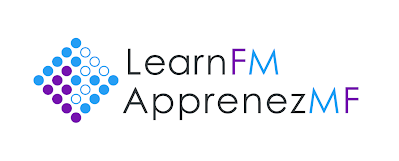Objectives
By the end of Family Medicine Clerkship, students will be able to:
1. Conduct a patient centered interview
a. To elicit the common symptoms associated with anxiety (as per the most current DSM criteria eg, tenseness, fatigued, reduced concentration, irritability)
b. To elicit the contextual and other factors contributing to the anxiety symptoms and probe for/describe impact of anxiety on patient’s function.
c. To differentiate between situational anxiety and anxiety disorders Ege: GAD, OCD, phobias, PTSD
d. To identify other conditions that can present with anxiety, co-morbid or more serious conditions, e.g. substance abuse, dementia, delirium, hyperthyroidism, arrhythmias personality disorders
e. To identify blended conditions ie: anxiety-depression, dual diagnosis
2. Identify high risk groups for anxiety disorder (eg. post-trauma, bereavement, malignancy or other serious illness diagnosis (in self or family member), dysfunctional families (abuse, separation, etc.), family history)
3. a. Propose non-pharmacologic and pharmacologic management options for patients with anxiety, including risks, benefits and limitations of the method(s) used.
b. Identify locally available resources which can provide support or help with ongoing management of this chronic condition.
Clinical Cards
References
Recommended Resources Addressing the Objectives
Overview of diagnosis and management of anxiety disorders (pages 9S to 21S; 12 pages) *Might change with time
Objectives covered: All
http://thehub.utoronto.ca/family/wp-content/uploads/2013/07/CPA-2006-Anxiety-Clinical-Practice-Guidelines-full.pdf
Canadian Psychiatric Association. Clinical practice guidelines. Management of anxiety disorders. Can J Psychiatry 2006 Jul;51(8 Suppl 2):9S-91S.
PMID – 16933543
Foundational Knowledge
The Calgary Guide – pathogenesis of anxiety
http://calgaryguide.ucalgary.ca/slide.aspx?slide=Pathogenesis%20of%20Anxiety%20Disorders.jpg
Additional Resources
Overview of different anxiety disorders and their treatment (8 pages)
Objectives covered: 1a-1c, 3a-b
http://thehub.utoronto.ca/family/wp-content/uploads/2013/07/Int-J-Psych-in-Clin-Pract-2012-Guidelines-for-treatment-of-anxiety-disorders.pdf
Bandelow B, Sher L, Bunevicius R, Hollander E, Kasper S, Zohar J, et al. Guidelines for the pharmacological treatment of anxiety disorders, obsessive-compulsive disorder and posttraumatic stress disorder in primary care. Int J Psychiatry Clin Pract 2012 Jun;16(2):77-84.
PMID:22540422
Symptoms most commonly associated with Anxiety (page 3 only)
Objectives covered: 1a
http://thehub.utoronto.ca/family/wp-content/uploads/2013/07/GAD-7-Clinical-Tool.pdf
Spitzer RL, Kroenke K, Williams JB, Lowe B. A brief measure for assessing generalized anxiety disorder: the GAD-7. Arch Intern Med 2006 May 22;166(10):1092-1097.
PMID:16717171
Psychotropic medications reference – with generic and brand names of different medications, and their action on various neuro-transmitters (2 pages)
Objectives covered: 3a
http://thehub.utoronto.ca/family/wp-content/uploads/2013/07/Psychotropic-Medications-Reference-Card.pdf
Preston J. Quick Reference to Psychotropic Medications. 2014; Available at: http://psyd-fx.com/wp-content/uploads/2013/11/Quick-Reference-2014-.jpg. Accessed June/3, 2014.
no PMID
Diagnosing and Treating Generalized Anxiety Disorder (7 pages)
Objectives covered: 1c, 3a-b
http://www.aafp.org/afp/2009/0501/p785.pdf
Kavan MG, Elsasser G, Barone EJ. Generalized anxiety disorder: practical assessment and management. Am Fam Physician 2009 May 1;79(9):785-791.
PMID:20141098
Patient Information

